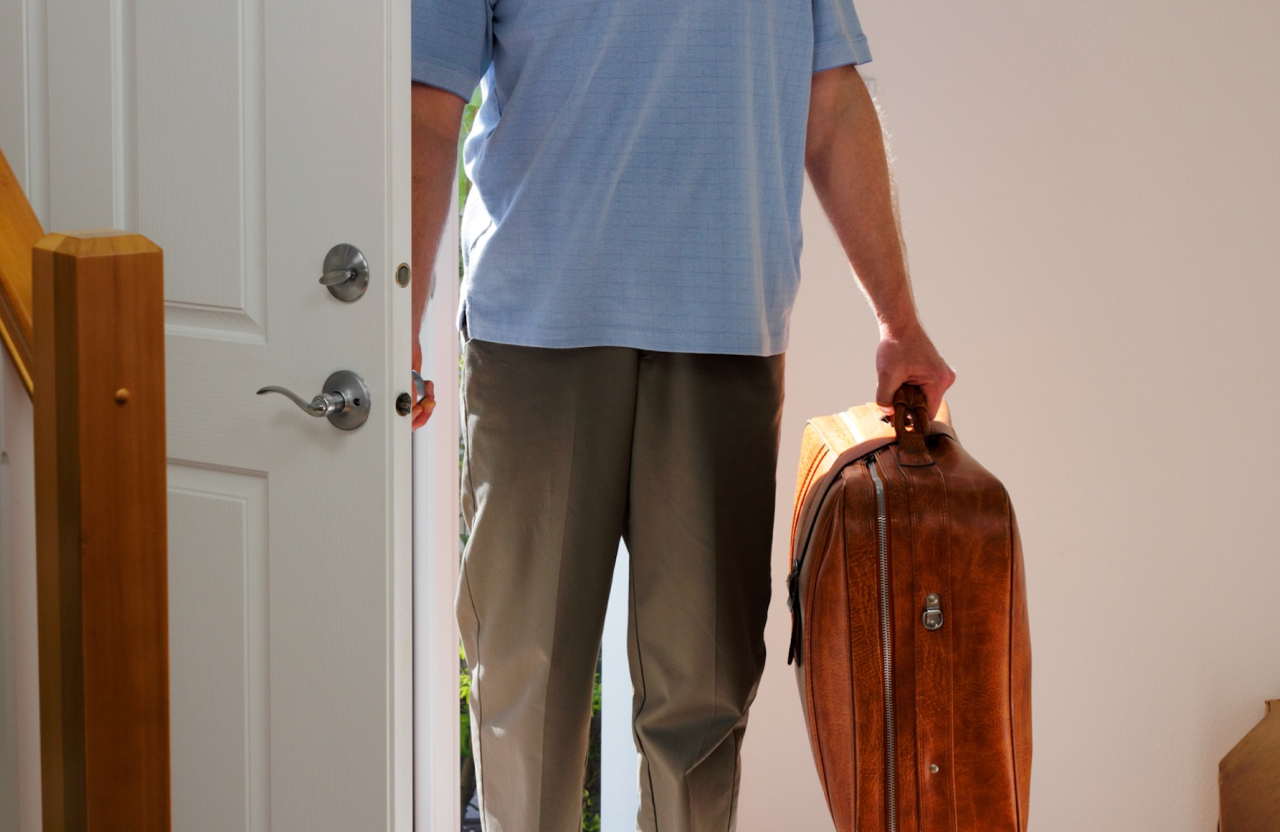Attention A T users. To access the menus on this page please perform the following steps.
1. Please switch auto forms mode to off.
2. Hit enter to expand a main menu option (Health, Benefits, etc).
3. To enter and activate the submenu links, hit the down arrow.
You will now be able to tab or arrow up or down through the submenu options to access/activate the submenu links.
Locator
Contact
Search
How We Can End Veteran Homelessness

By Shawn Liu, Director of Homeless Outreach for the VA Homeless Programs Office
Posted February 11, 2025
Since 2010, 85 communities and 3 states have effectively ended Veteran homelessness. Through hard work and dedication, they created a roadmap to success that we can all follow as we try to build a world without Veteran homelessness.
Among all the lessons learned, one thing stood out—the importance of bringing all of the different programs and services together into a single, unified, community‐wide homeless response. When programs and services worked together instead of making individual decisions, those experiencing homelessness were more efficiently connected with stable housing and supportive services.
To do so, communities used coordinated entry (CE), leveraging cooperation between local homeless agencies and service providers and creating a standard set of guiding principles so homeless service providers could make consistent decisions about combining resources and using them effectively.
Comprehensive Services
Communities and states that successfully ended Veteran homelessness also took full advantage of the wide array of services VA offers, including:
- Prevention services that keep Veterans from becoming homeless
- Outreach services that provide the front doors to homeless programs and the broader VA health care system
- Interim, emergency, or transitional housing for Veterans who need a place to stay right now
- Permanent housing services that come with rental subsidies, case management, and treatment to ensure Veterans have all the necessary resources to stay housed
Effective communities also regularly reviewed available resources and took advantage of opportunities to “right size” their response by requesting more resources or by modifying existing resources.
Strong Leadership Teams
Local leadership teams were tasked with overseeing effective coordination and collaboration among community partners, allowing them to fully utilize all outreach, interim housing, permanent housing, and treatment resources in a community. Teams consisted of:
- Representatives from the VA Medical Center homeless programs
- VA-funded grantees and contractors
- Local Continuums of Care
- Nonprofits working to end Veteran homelessness
- Formerly homeless Veterans
- Public housing agencies
- Veteran service organizations
- Municipal and state government entities and elected officials
- State and local departments of mental health, public health, housing, and human services
They met regularly to set measurable goals, review data to keep themselves accountable, and identify opportunities to streamline processes or provide policy flexibilities.
Real‐Time Data Through By‐Name Lists (BNL)
Successful communities had to figure out a way to account for all Veterans experiencing homelessness in order to provide necessary housing and assistance to all of them.
To do so, they used BNLs, which provided the information and transparency they needed to develop a housing and service plan for every Veteran. Effective BNLs allowed communities to:
- Account for every Veteran by name and ensure they had a coordinated housing and service plan
- Understand in real time how many Veterans entered and exited homelessness each month (commonly referred to as inflow and outflow), which helps allocate resources so outflow is high enough to reduce homelessness
- Set benchmarks to continuously improve efforts
Culture of Continuous Improvement
Combining BNL data with a culture dedicated to continuously improving helped to enhance community‐wide homeless response systems.
A culture of continuous improvement featured shared goals, a spirit of collaboration, a commitment to transparency and accountability, a dedication to knowledge, psychological safety for staff, and structured problem‐solving.
Staff could focus on improvements, like increasing the number of Veterans who exit homelessness to permanent housing each month, by improving success rates of program interventions or decreasing the average number of days from when the system identifies a Veteran as homeless to when they exit to permanent housing.
Working as One Team
We can now take everything we learned from these communities and states to continue building on decades of success in reducing the number of Veterans experiencing homelessness in our country.
Since we know that a coordinated response is most critical to success, we’ve implemented our One Team approach, which aims to remove barriers to collaboration both within VA and with our network of community partners. Explore more best practices for ending Veteran homelessness in our One Team Approach Implementation Toolkit.
Learn about VA homeless programs
- If you are a Veteran who is homeless or at risk for homelessness or need to connect with a Veterans justice outreach specialist, call the National Call Center for Homeless Veterans at 877‐4AID‐VET (877‐424‐3838).
- Visit the VA Homeless Programs website to learn about housing initiatives and other programs for Veterans exiting homelessness.
- Check out the Ending Veteran Homelessness podcast to learn more about what VA is doing about Veteran homelessness.
- Learn how to get involved with housing homeless Veterans.
- Subscribe to the Homeless Programs Office newsletter to receive monthly updates about programs and supportive services for Veterans experiencing or at risk of homelessness.





























